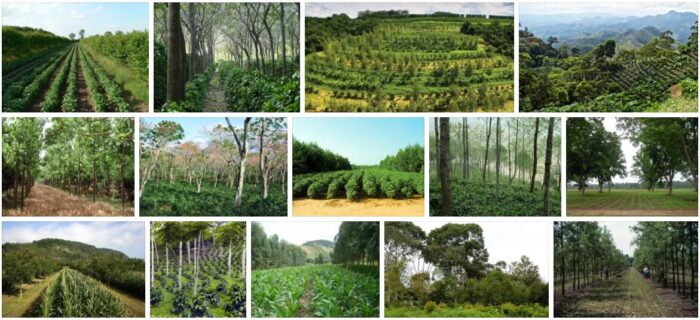
Is it possible to produce food while preserving ecosystems and biomes? Thinking about this possibility and taking inspiration from the ways of life of traditional populations, such as indigenous and quilombolas, scientists – agronomists, geographers and biologists – have developed planting systems that provide for the combination of forest and agricultural production. It is the agroforestry or agroforestry system .
Concept and operation
Agroforestry is based on the principle of conservation and sustainable use of natural resources , while still producing food. As in the natural space, where the diversity of plants and animals reaches an environmental balance, it is possible to preserve this balance by introducing productive species, provided that the types of production suitable for each biome or ecosystem are planned.
An agroforestry is a production system that reproduces the dynamics of a natural forest, using the diversity of species to create a sustainable cycle : trees, shrubs, microorganisms, animals and water resources, together, provide the materials necessary for food to be produced.
Agroforestry systems also serve as measures to recover degraded areas. As its objective is to take advantage of climatic and natural conditions to simulate the functioning of a natural forest, many of the plants and trees used come from the native vegetation of the biomes where these systems are implanted.
Types of agroforestry
- Agrosilvopastoral systems : systems that combine agricultural and forestry crops for animal husbandry (agriculture + forest + livestock).
- Agroforestry or silviagricultural systems: combine agriculture with forest species (agriculture + forest).
- Silviculture systems: combination of trees and pastures for animal husbandry (forest + livestock).
Benefits of agroforestry systems
- Diversity and climatic balance:the vegetation allows the maintenance of temperatures and humidity, helping the development of agricultural and non-agricultural species, as well as the emergence of new species, from the new climatic conditions.
- Soil quality and productivity:the vegetation cover supplies the soil with nutrients and microorganisms that fertilize the soil and naturally control pests and diseases.
- Greater variety of products:the combination of several crops allows the farmer economic sustainability, since, unlike monoculture, agroforestry allows the diversified harvesting of food at different times of the year.
- Less spending on pesticides and agricultural inputs:as agroforestry develops a diversity of flora and fauna, the created ecosystem achieves a balance of self-control of diseases and pests. This decreases farmers’ spending on pesticides, as well as decreasing contamination of food, soil and water resources and improving the health of farm workers.
- Preservation of springs:the vegetation allows a better capture of the rains. The water that, in a traditional system, would drain quickly, is absorbed by the soil and feeds the underground sheets. In addition, soil and vegetation act as natural filters, ensuring water quality.
- Atmospheric balance: agroforestry increases the density of vegetation, tending to balance the climate and temperatures and reducing problems such as the worsening of the greenhouse effect, responsible for global warming.
